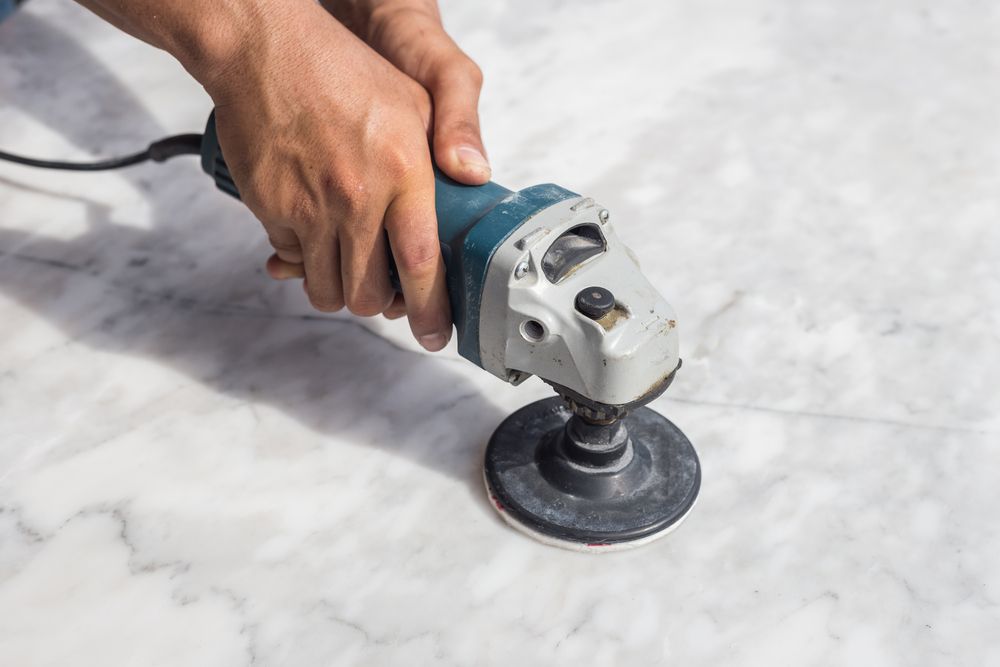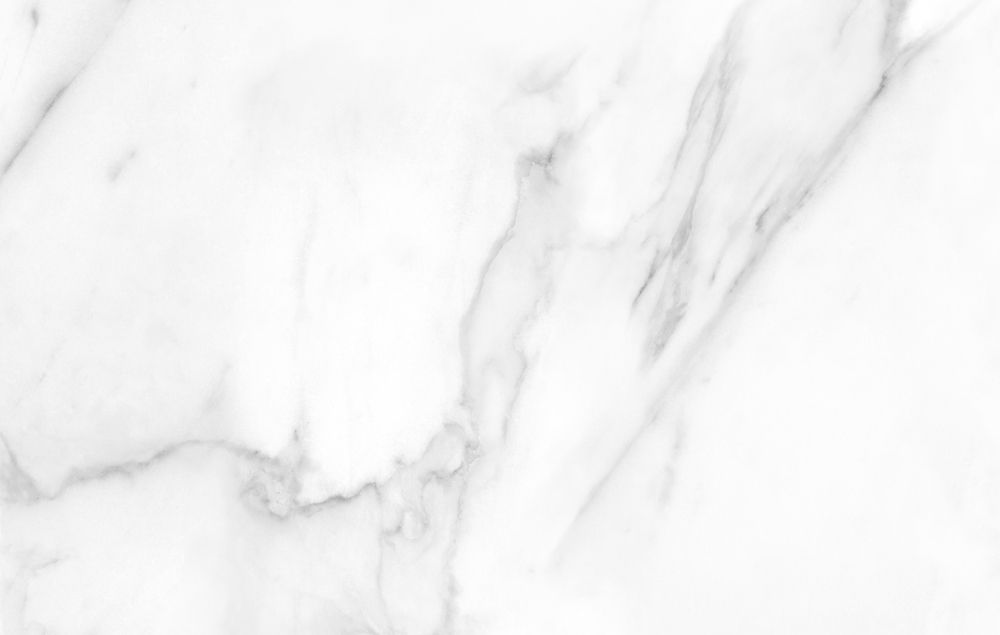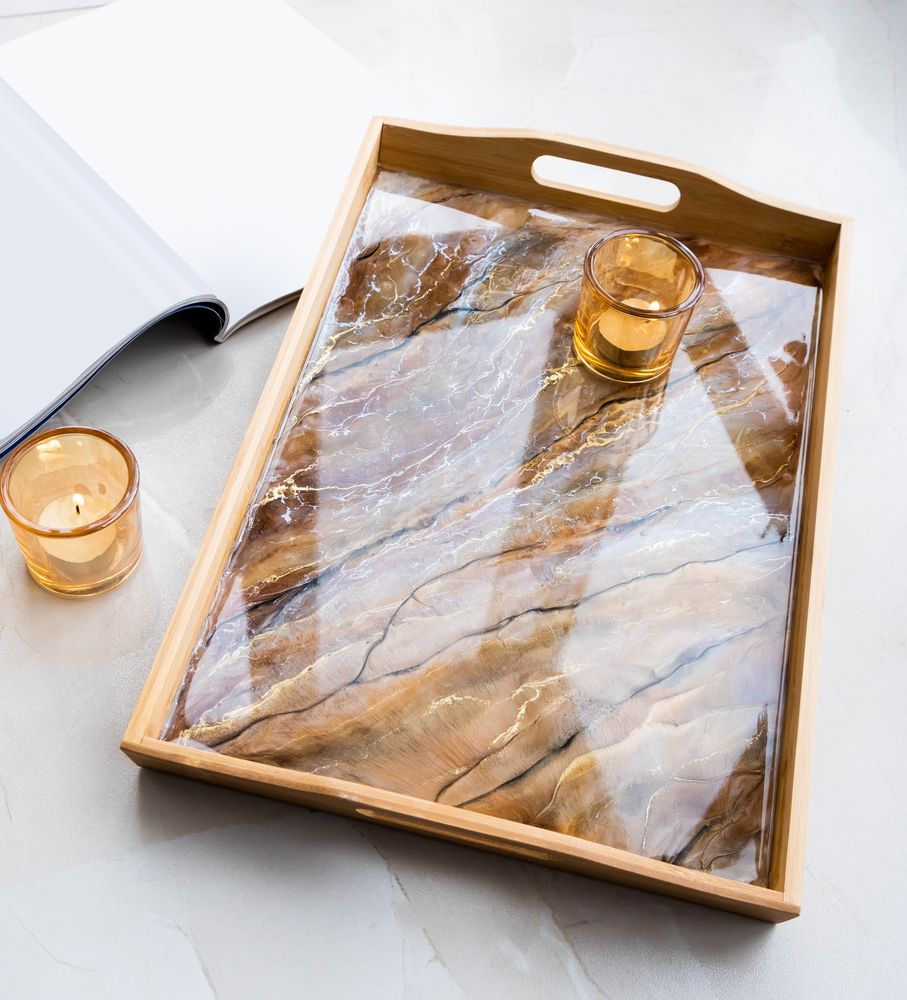If you have decided you like how beautiful marble is, you know that real marble is rather expensive. That is where faux marble comes in. A friend wanted a marble look in her kitchen without the high price tag attached to it and asked me to help her. I contacted a contractor to find out if there were alternatives for marble, which led us to wonder what faux marble is.
Faux marble is artificially made from various materials, like crushed stones (engineered marble), paint, wallpaper, etc. There are many techniques to get a finish that resembles the veins and streaks of real marble. Authentic marble is a metamorphic rock that consists of limestone and calcite.
We spoke to the contractor about what faux marble is, the different types, the materials they are made from, and the affordable alternatives. After additional research, we were surprised at how many faux marble products are available.
What is Faux Marble?
Faux marble is the final product made using artificial materials to get the same look as authentic marble but at a fraction of the cost. Before we can look at the various kinds of faux marble, we must properly understand what real marble is made of to compare the various faux marbles.
Real marble consists of limestone and calcite, which make it metamorphic rock. Real marble comes in varied colors due to the mineral deposits in the stone that form different colored veins over time. There is white marble, black marble, brown marble, pink marble, and Penteli or yellow marble.
Real marble is a solid stone that is cut into the appropriate sizes. It can be left raw, or the manufacturers can polish it to a shine. Some of the faux marble options we will look at include engineered marble, painted laminate, and faux marbleizing (a specialized painting technique).
Engineered Marble

To get the best imitation of marble, manufacturers of engineered marble use fine or small pieces of actual marble, sand, quartz, stone dust, colophony, colored pigments, cement, plastic, and acrylic glue (resin). These materials are mixed in particular order and amounts, and the mixture is then aggressively agitated in a vacuum.
After creating the correct consistency, they put the mixture in a mold. Then the manufacturers place the mold under high pressure to solidify the mixture. The final results are solid engineered marble stones or slabs.
Many people think that faux marble and engineered marble are the same (which is true), but the difference lies in how much of each material is used. To create faux marble, the manufacturers use a very large amount of resin compared to the engineered marble. That is also why faux marble costs less than engineered marble.
The Pros of Using Engineered Marble
When deciding on the kind of faux marble you want to install in your home (be it for a countertop, walls, or flooring), it’s important to know the advantages of each. Below are some of the pros of engineered marble.
The Price Tag
While you can expect to pay a lot for authentic marble, engineered marble will cost you around 40% less than authentic marble. You will get the same gorgeous look for much less and save a lot of money on the overall remodeling or home build.
You Get a Solid Piece
When you use engineered marble, you get a solid piece to work with. So you won’t have any pesky grout lines that need to be filled, meaning you won’t have to worry that the grout will stain your engineered marble surface. You can also custom cut the piece beforehand so you won’t have to do it yourself.
Engineered Marble Has Fewer Maintenance Issues
Engineered marble has much fewer maintenance issues than real marble. Real marble has many maintenance issues that you need to keep up with. It must be sealed at least once every six months to avoid the porous surface staining with spills.
Engineered marble has a non-porous surface that is stain-resistant and won’t need to be sealed. It can be washed with normal chemicals, whereas real marble needs to be washed with specific chemicals that won’t stain.
Durability
Engineered marble is much more durable than real marble as it is more scratch-resistant. Real marble can become vulnerable over time and acquire small chips, so engineered marble will work best for high-traffic areas.
The Cons Of Using Engineered Marble
While engineered marble may have more pros than real marble, there are a few disadvantages as well.
The Coating Can Crack
Engineered marble is usually sealed using a gel coating. The coating can deteriorate over time and begin to crack. You need to ensure that the engineered marble is not exposed to extreme heat or cold conditions to help keep the gel coating intact.
It Can Get Damaged By Extreme Conditions
As stated in the section above, if the engineered marble is exposed to extreme heat or cold for too long, the gel coating that the faux marble is sealed with can get damaged. The extreme heat may also damage the resin used to fuse the materials in the manufacturing process.
Painted, Printed, Or Pre-Made Faux Marble
If you want a cost-effective way to achieve an expensive marble look, you might want to try pre-made, painted, or printed faux marble.
Pre-Made Faux Marble

Pre-made faux marble is where manufacturers use realistic marble designs in various styles and colors emprinted on different materials like tiles and laminate countertops. The base of the countertops is typically cheap pressed wood such as particleboard or MDF.
These countertops are wrapped in thin layers of laminate that give them the marble effect. If you are looking for a sturdier base, you can opt for a pressure-treated wood base for the countertops, but they cost more.
The pre-made faux marble tiles are made from porcelain and can look extremely authentic. Various marble designs and colors are printed on the surface of the tiles, and a clear surface coating is used to seal the designs. These are an affordable alternative to real marble, and they can last many years with proper maintenance.
Printed Faux Marble

If you are renting a home but are not allowed to make permanent changes to the home and you want a change of scenery, you can use printed faux marble wallpaper or printed PVC wall tiles. These faux marble designs can be used temporarily to enhance the look of any home. They work perfectly in places like kitchen cabinet doors or bathroom cabinets.
Pros of Using Painted, Printed, or Pre-Made Faux Marble
Using the correct faux marble for your home is essential, and it’s good to know more about the product you will use, such as the pros of using painted, printed, or pre-made faux marble.
The Price Tag
When using pre-made faux marble countertops, tiles or wallpaper are much more affordable than authentic marble. The other reason it’s worth using these faux marble products is that they are less expensive to replace should something go wrong.
It’s DIY Friendly
Using pre-made faux marble products is user-friendly, and you don’t need to hire professionals to help you if you don’t want to spend the extra money. The PVC faux marble tiles have an adhesive on the back, and so does the faux marble wallpaper, making them easy to use even for beginner DIYers.
Varied Designs and Colors
Most of the pre-made faux marble products come in many styles and colors. Some have gold, silver, or metallic-colored veins to add a pop of color. You can find many designs with multiple colors to suit every theme you can think of.
Easy to Maintain
Pre-made faux marble products are easy to maintain as you only need to wipe them down. If there is a problem with a product, you can replace it, and it won’t break the bank. You don’t need a sealant or protective coating like you would with real marble.
Cons of Using Painted, Printed, or Pre-Made Faux Marble
As with most other products, pre-made faux marble has a few disadvantages you need to consider before making a final decision.
Not Made for Heat
While the pre-made faux laminate countertops and wallpaper are easy to install and maintain, they are not made to withstand heat. You must be careful when you expose countertops, wallpaper, or PVC tiles to heat. These products can burn, and the countertops can delaminate (laminate pulls away from the wood base).
Difficult to Repair
If your pre-made faux marble products incur damage, it’s very hard to repair; as a result, they may not look the same color as the original, or there might be divots and bumps on the countertops and wallpaper. In these cases, you might need to replace the product entirely.
Faux Marbleizing (DIY Painting)

Many people use their existing laminate countertops, wall, or concrete floor as a base and paint a faux marble design that looks very realistic. Then lightly sand the surface down with 240-grit sandpaper.
Then they use a melamine primer with colored and white epoxy paints to make the veins. They top it off with a clear polyurethane varnish.
Pros of Using Faux Marbleizing
If you are an avid DIYer, taking on a faux marbleizing project may be right up your alley, and there are a few benefits to using this technique.
It’s Easy to Clean
When you use the shiny clear polyurethane varnish, it protects the paint underneath from getting stains and spills. You only need a clean wet cloth to wipe up spills, and you are all set.
It’s Less Expensive
When you faux marbleize your countertops, walls, or floors, you save money on the equipment and materials as they are less expensive than some other faux marble options, and you save on labor as you can paint the counters yourself.
You Can Use Different Bases If It’s For Countertops
If you want to faux marbleize countertops, you can use wood or laminate countertops. If you want to faux marbleize walls or floors, starting on a concrete wall or concrete floor is best. The epoxy adheres much better to concrete and makes a sturdy base.
Cons of Using Faux Marbleizing
Using faux marbleizing in your home is a great way to enhance the look, but it has a few disadvantages worth noting.
Not Heat-Resistant
If you have faux marbleized floors or countertops, be careful to put hot pots or pans on the counter without a pad, or the epoxy might warp and burn.
It’s Not Food Safe
While you can cut directly on a real marble countertop if you want to, you need to use a cutting board when cutting anything on a faux marbleized countertop, or it will leave dings and scratches.
Alternatives for Using Faux Marble
While using faux marble has many benefits, there are a few alternatives you could try if you are not ready to commit to faux marble fully.
- Vinyl tiles can be used on floors and as a substitute for faux marbleizing. These tiles come in many colors and styles; some look like wood or stone.
- You can use ceramic tiles for the walls or floors if you want a different look. Ceramic tiles come in many styles, and you will surely find a color to suit the theme in your home.
- You can use composited wood flooring planks instead of faux marble for your flooring and walls. It makes a great feature wall with the right lighting.
- For countertops, you can install a concrete countertop and have a professional acid etch and seal it. It gives the counters an edgy industrial look, and many people have also started to use this method on floors.
Final Thoughts
When you don’t want to use faux marble instead of the real deal, you have many options. Each option has benefits and drawbacks that can help you make the right choice for you and your needs. Many of the faux marble options are less expensive and easy to maintain. As long as you don't use extreme heat (like a hot pan or pot) near or on any of these surfaces, they will last a few years.
